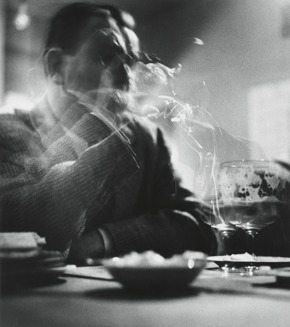- Events & Programs Home
- Calendar
- Accessibility
- Adults
-
Families & Teens
- Families & Teens Home
- 10x10 Teen Art Expo
- Art on the Rise
- Art Together: Art Making for Families with Children Ages 3–5
- Babies Sing with May Festival Minis
- Boy Scouts / Girl Scouts
- CAM Kids Day
- Family Storytime and Gallery Walk
- Family Studio: Art Making for Families with Children Ages 6–12
- Games in the Galleries
- Members-Only Baby Tours
- Public Baby Tours
- REC Reads
- Rosenthal Education Center (REC)
- Saturday Morning Art Class
- See Play Learn Kits
- Summer Camp
- Teen Fest: Zine and Comic Exchange
- RECreate
- Teachers
- Community Outreach
- Fundraisers
- Plan Your Own Event

- Events & Programs Home
- Calendar
- Accessibility
- Adults
-
Families & Teens
- Families & Teens Home
- 10x10 Teen Art Expo
- Art on the Rise
- Art Together: Art Making for Families with Children Ages 3–5
- Babies Sing with May Festival Minis
- Boy Scouts / Girl Scouts
- CAM Kids Day
- Family Storytime and Gallery Walk
- Family Studio: Art Making for Families with Children Ages 6–12
- Games in the Galleries
- Members-Only Baby Tours
- Public Baby Tours
- REC Reads
- Rosenthal Education Center (REC)
- Saturday Morning Art Class
- See Play Learn Kits
- Summer Camp
- Teen Fest: Zine and Comic Exchange
- RECreate
- Teachers
- Community Outreach
- Fundraisers
- Plan Your Own Event
Blog: CAM Uncovered
Blog: CAM Uncovered
- Home
- Plan Your Visit
- Art
-
Events & Programs
- Events & Programs Home
- Calendar
- Accessibility
- Adults
-
Families & Teens
- Families & Teens Home
- 10x10 Teen Art Expo
- Art on the Rise
- Art Together: Art Making for Families with Children Ages 3–5
- Babies Sing with May Festival Minis
- Boy Scouts / Girl Scouts
- CAM Kids Day
- Family Storytime and Gallery Walk
- Family Studio: Art Making for Families with Children Ages 6–12
- Games in the Galleries
- Members-Only Baby Tours
- Public Baby Tours
- REC Reads
- Rosenthal Education Center (REC)
- Saturday Morning Art Class
- See Play Learn Kits
- Summer Camp
- Teen Fest: Zine and Comic Exchange
- RECreate
- Teachers
- Community Outreach
- Fundraisers
- Plan Your Own Event
- Give & Join
- About
- Tickets
- Calendar
- Exhibitions
- Collections
- Blog
- Shop
Organizing Kentucky Renaissance
by Brian Sholis
10/18/2016
Kentucky Renaissance , Lexington Camera Club , photography , community , curatorial

The inspiration for what became Kentucky Renaissance first hit me in 2011, when I was invited to organize an exhibition for a small nonprofit gallery in New York City. I had long been fascinated by the friendships of photographer Ralph Eugene Meatyard, writer Guy Davenport, Trappist monk Thomas Merton, and farmer and cultural critic Wendell Berry. In the exhibition I conceived then, I hoped to examine how those friendships affected their creative lives.
Logistical complications prevented me from pursuing that project. This, however, proved to be a blessing in disguise. Two years later I moved to Cincinnati to be the Cincinnati Art Museum’s photography curator. Now less than ninety miles from Lexington, I began devoting time to researching the city’s creative community during the middle of the twentieth century.
Meatyard is well known in photography circles; several large museum exhibitions and detailed books have surveyed his work. Most of these made reference to the Lexington Camera Club, but few looked closely at the club’s role in his life, instead describing him as something of a lone genius, a Southern Gothic folk hero.
I soon discovered that he was, in fact, surrounded by other artists in Lexington whose undertakings were remarkably creative. Many were members of the Lexington Camera Club, and I resolved to bring together the most artistically adventurous members of the group in a new exhibition proposal. After that proposal was approved in 2014, the real work began.
The connections among club members extended outward into other corners of Lexington and its environs. My subtitle therefore invokes the “Lexington Camera Club and Its Community.” Photographers, writers, printmakers, fine-press bookmakers, painters, musicians: as with many artistic communities, these Lexingtonians found inspiration and camaraderie across disciplinary boundaries. While Kentucky Renaissance is undoubtedly a photography show, I believe this broader context is important to keep in mind.
After all, inspiration only takes you so far. It’s important to have a community of friends who share your interests and encourage your efforts. It’s important for curators, critics, and art historians to remember this, and to bring to light those whose efforts were important in their time but whose reputations may now be eclipsed. Many lesser-known figures are lesser-known only due to the deficit of our attention. In this case, I discovered that many Lexington Camera Club photographers make strong claims for that attention, and their pictures reward close looking.
Image credit:
Ralph Eugene Meatyard, Untitled, 1957, Gelatin-silver print, 11 3/4 x 10 1/2 in. © The Estate of Ralph Eugene Meatyard, courtesy of Fraenkel Gallery, San Francisco, and DC Moore Gallery, New York.
Cincinnati, OH 45202
Toll Free: 1 (877) 472-4226
Museum Hours
Museum Shop
Terrace Café
Library
Cincinnati Art Museum is supported by the tens of thousands of people who give generously to the annual ArtsWave Campaign, the region's primary source for arts funding.

Free general admission to the Cincinnati Art Museum is made possible by a gift from the Rosenthal Family Foundation. Exhibition pricing may vary. Parking at the Cincinnati Art Museum is free.
Generous support for our extended Thursday hours is provided by Art Bridges Foundation’s Access for All program.

General operating support provided by:



